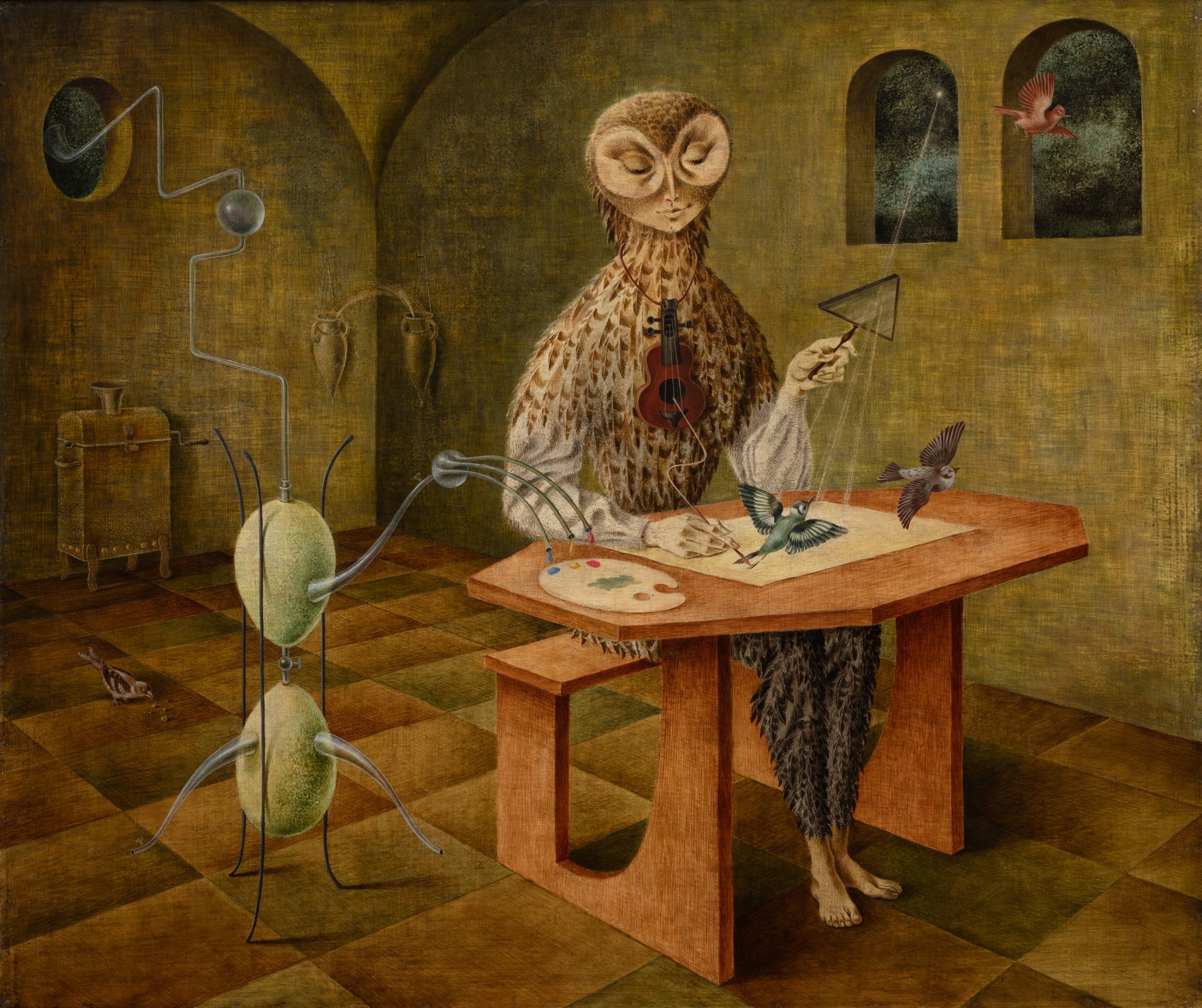Editor’s Note: Untold Art History?investigates lesser-known stories in art, spotlighting unsung and pioneering artists you should know, as well as uncovering new insights into influential artworks that radically shift our understanding of them.
In her Mexico City studio, the artist Remedios Varo — who painted meticulous, fantastical scenes in the mid-20th century — kept all her essentials nearby: paintbrushes, oil paints, graphite, hardboard and luminescent quartz crystals, which she charged by moonlight in hopes of harnessing an arcane energy.
Varo — full name María de los Remedios Alicia y Rodriga Varo y Uranga — was a Spanish emigre who joined the creative milieu that turned Mexico’s capital city into a flourishing center for surrealism, the movement founded in Paris by the writer André Breton in the 1930s and ’40s. Like many of her contemporaries, Varo fled Europe as war bore down on the continent, arriving in Mexico in 1941. It took more than a decade for her to exhibit her work there, but when she did, she left her mark.
In mesmerizing, dreamlike scenes teeming with symbolism pulled from science, alchemy, music and the occult, Varo hoped to explore what lies beyond our perception of the world — and to translate those experiences into art. What would it mean to enchant a painting to mystical effect?
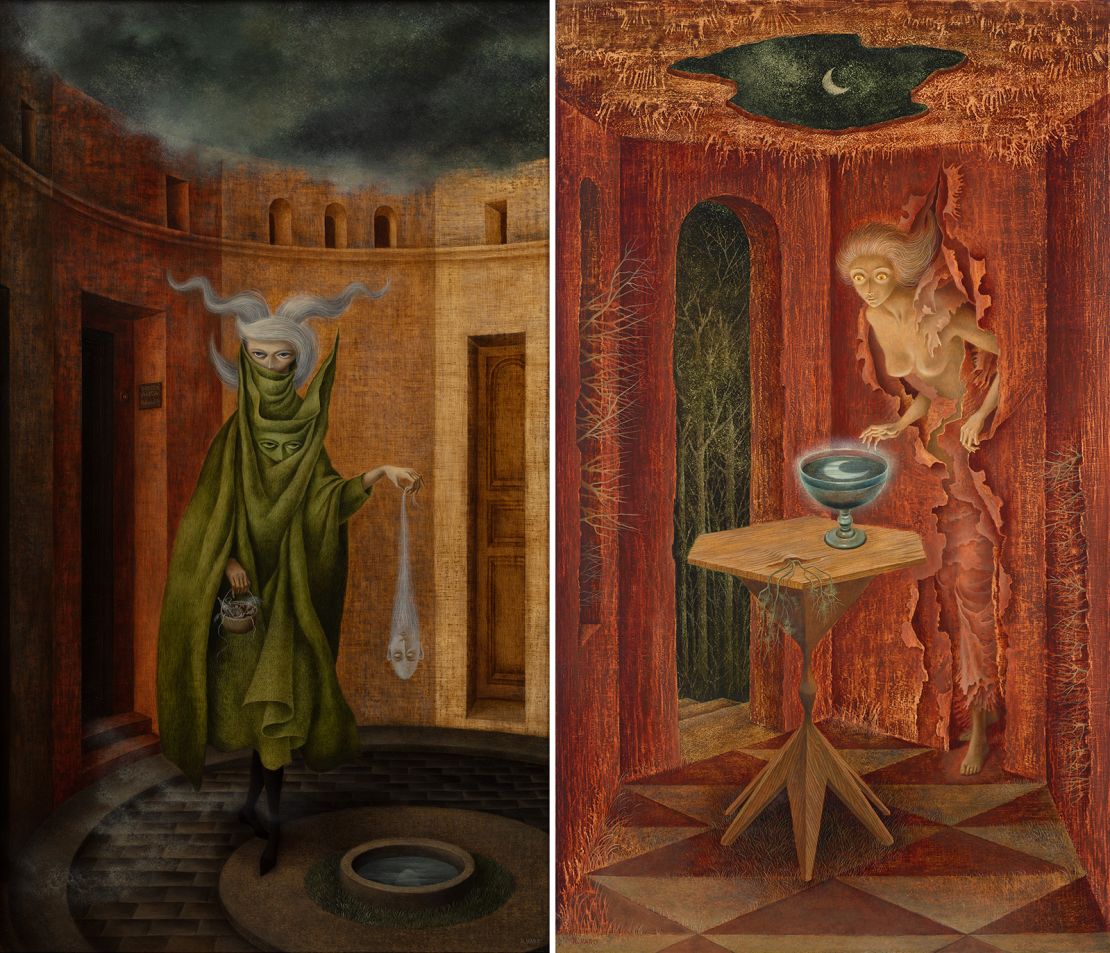
While Varo’s all-too-short career made her famous in Mexico — she died at just age 54, from a heart attack — she’s one of the many women surrealists from the mid-20th century who were more widely overlooked until the last decade. Artists such as Salvador Dalí, Joan Miró and Max Ernst have enjoyed a century of fame, while many of the women associated with the movement have been treated with less importance, or framed as “muses.” Eurocentric scholarship often gave more focus to artists working in Paris, as well, despite surrealism’s deep roots in Mexico.
Now, 23 years after Varo’s work last starred in a major museum show in the United States, “Remedios Varo: Science Fictions,” recently opened at the Art Institute of Chicago, bringing together more than 60 of her works to examine the mysteries of both her esoteric subject matter and the complexities of her process.
“(In Mexico) Varo is a name that you hear in the same breath as Frida Kahlo or Leonora Carrington,” said curator Caitlin Haskell, who mounted the exhibition with Tere Arcq, the former chief curator of Mexico City’s Museo de Arte Moderno, which is a partner for the show.
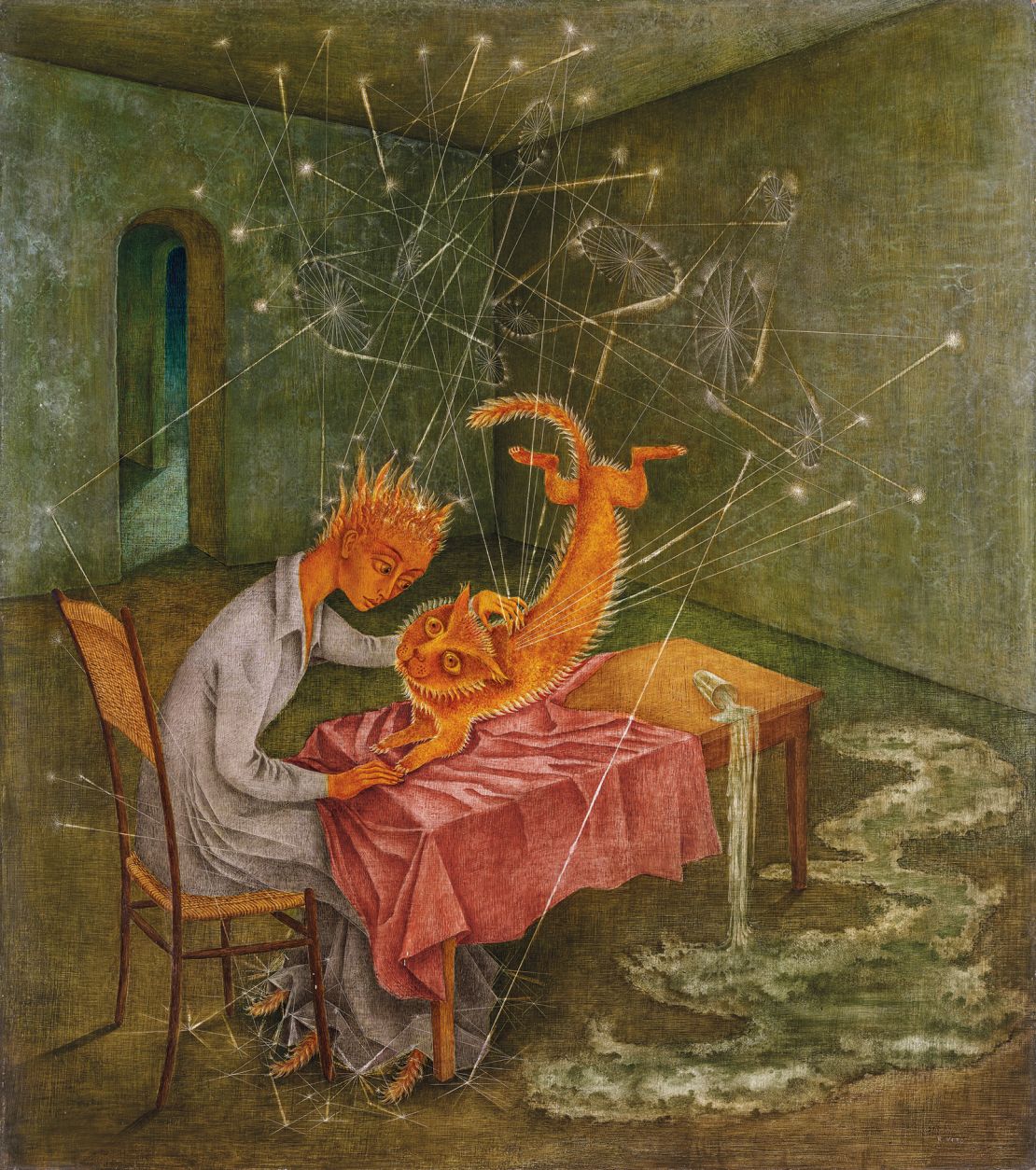
But in the US, few institutions have acquired Varo’s works; a notable exception is New York’s Museum of Modern Art, which added “El Juglar (El malabarista)” — “The Juggler (The Magician)” — to its collection in 2018. The piece now appears at the Art Institute on loan.
“Prior to that, it was extremely challenging to see any works of Varo’s, really, in public collections in the US,” Haskell said, noting that the bulk of Varo’s oeuvre remains in Mexico, thanks to museum donations by her husband, Walter Gruen, after her death.
Alchemy and artistry
During her life in Mexico City, Varo bonded with fellow artist Carrington and photographer Kati Horna. They became known in art circles as the “three witches” for their pursual of knowledge around supernatural rituals, indigenous spiritual practices and metaphysical studies — from tarot readings to shamanic psychedelics to attempts to stop or slow time. They traveled around the country in search of rarified knowledge, and followed the teachings of philosophers and mystics like George Gurdjieff, who believed that humanity could access a higher state of consciousness. Varo painted multilayered scenes of magic and mystery, creating worlds that followed their own order, where cats crackle with cosmic electricity and music has the power to construct architectural forms.
“I deliberately set out to make a mystical work, in the sense of revealing a mystery, or better, of expressing it through ways that do not always correspond to the logical order, but to an intuitive, divinatory and irrational order,” Varo is quoted as once saying in the Art Institute’s exhibition catalog.
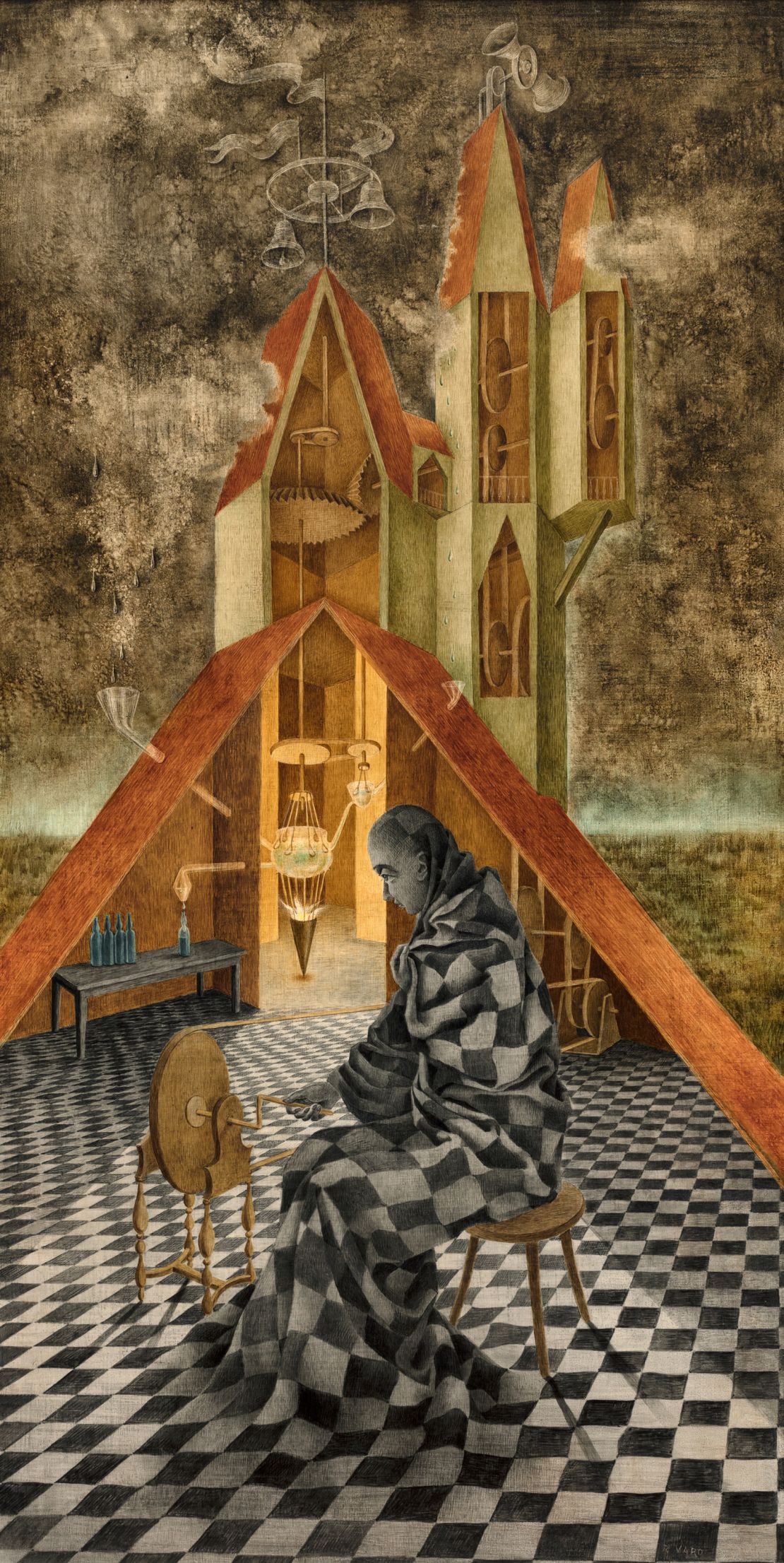
In the 1957 painting “Creación de las aves” (“Creation of the Birds),” which was also shown at the 2022 Venice Biennale in the exhibition “The Milk of Dreams,” Varo imagined an owl-human artist sitting at a desk, bringing painted birds to life through a beam of starlight refracted in a glass prism.?The winged creatures fly off the page as the owl paints them.
In the Art Institute’s “Science Fictions” exhibition, Varo’s work casts the traditionally male alchemist as female in?“Ciencia inútil, o El Alquimista” (“Useless Science, or The Alchemist”), her lone figure distilling a cloud of vapor on a checkerboard floor that twists into her cloak. A clue to the alchemist’s?experimentations lies within the piece’s color palette, as the exhibition’s catalog points out: Black, white, yellow and red reference the four-staged chemical reaction fabled to take place in creating the immortality-granting elixir of life.
“She’s striving to get at something that the universe is trying to communicate to us… and then expressing that visually,” Haskell said.
References or allusions to music often made appearances in Varo’s compositions, as the artist worked to embed the sonorous in visual form — a composer concocts a segment of music with notes made from magical ingredients, for example, or a flutist plays among the hazy eruption of a volcano.
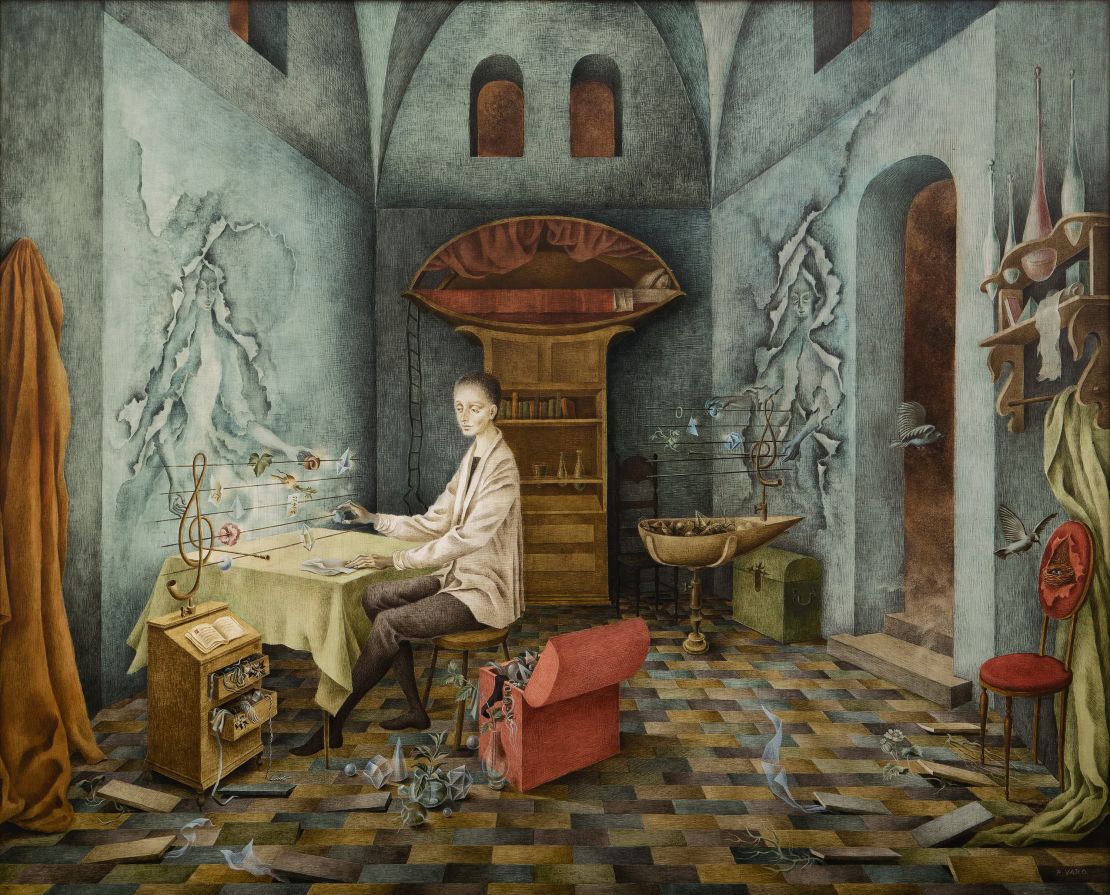
Varo’s sense of humor periodically cuts through in her work.?In the 1940s, while undertaking commercial freelance work for a pharmaceutical company, she anthropomorphized maladies?— anxiety and depression were imagined as tortured figures and bacteria became blade-wielding creatures. Later, in the 1960 painting “Mujer saliendo del psicoanalista (Podría ser Juliana)” — “Woman Leaving the Psychoanalyst (Could be Juliana)” — Varo painted an enigmatic gray-haired women cloaked in green leaving a therapy appointment seemingly carrying her baggage with her: the ghostly head of her father, which she is about to?drop unceremoniously in a nearby well.
In preparation for “Science Fictions,” Haskell became fascinated by the complexity of Varo’s techniques, and collaborated with conservator Katrina Rush to better understand the surfaces of her paintings, which seem to “shimmer with an almost mystical quality,” Haskell said. In order to achieve such textures, Varo made small scratches across dried layers of gesso-coated hardboard using the crystals she kept at her easel, before applying oil paint. From there, she applied a constellation of techniques, such as decalcomania (pressing and removing another material to wet paint for texture), sgraffito (scratching paint to reveal the gesso beneath for highlights), and soufflage (blowing air through a straw onto thin paint to create patterns). In some works, like “The Juggler,” she inlaid mother-of-pearl to heighten the luminosity.
In addition to “picturing alchemy,” Haskell noted, “she’s thinking about her own practice as a type of alchemy. You see that on the surface of her work, with story and material coming together into one unified composition. And I think that’s incredibly special.”
Similarly, much of what Varo depicted was guided by experiences happening beyond the two-dimensional surface: the incantations she repeated while mixing oil paintings, the crystals she used as conduits, feelings of harmony or magic evoked by herbal concoctions, and the invisible energies she thought bound our earthly plane to the beyond.
“So much of her work is about what you can perceive in the world around you — that you can’t see around you, but that you want to believe in,” Haskell said.
